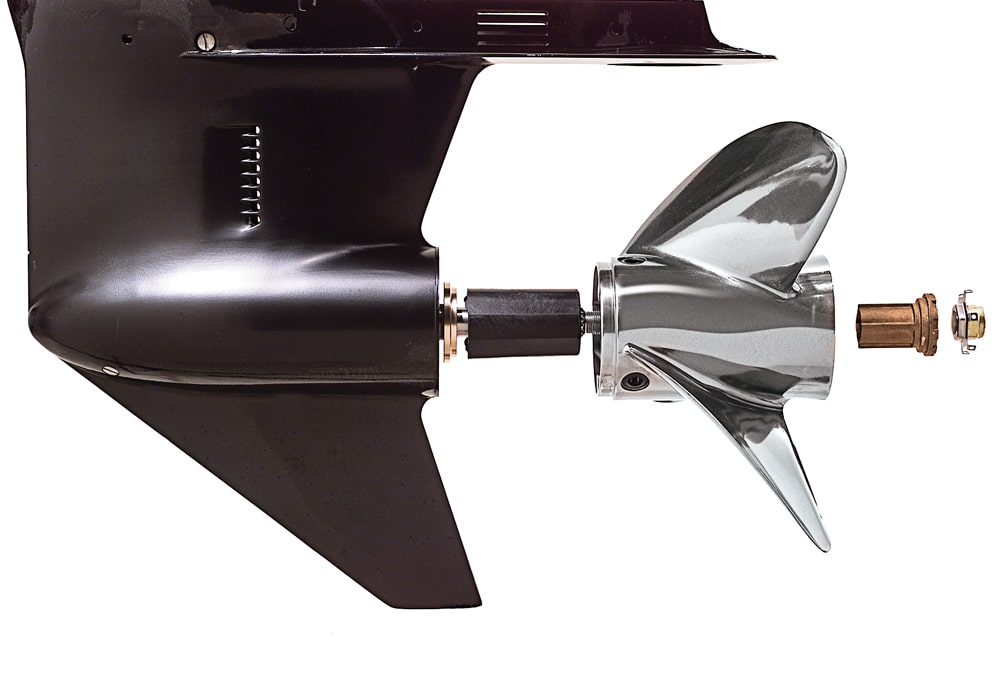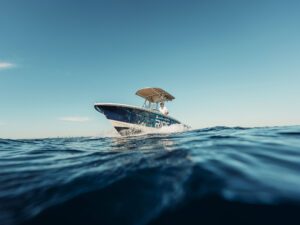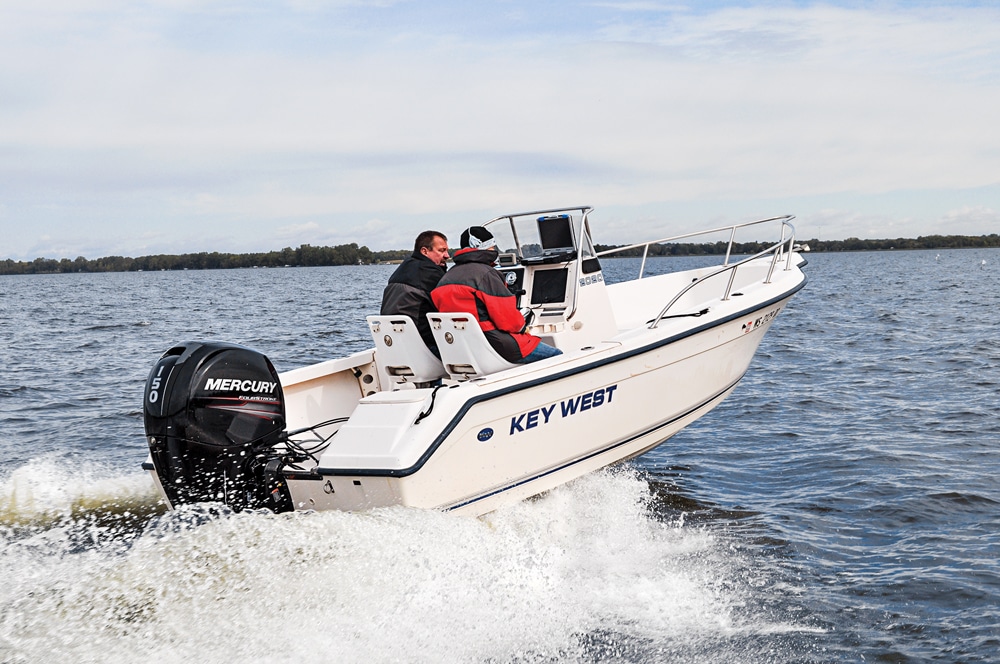
Choosing the Right Prop
During my 30-plus-year history with this magazine, reader queries about propellers have remained constant and unrelenting. Questions that once came in letters and phone calls now arrive digitally, but they are the same questions: Should I switch from an aluminum prop to one made of stainless steel? Will a four-blade boat propeller improve my hole shot? My buddy says my prop is too small/big. … What do you think? And the ever-popular Will this prop make my boat go faster?
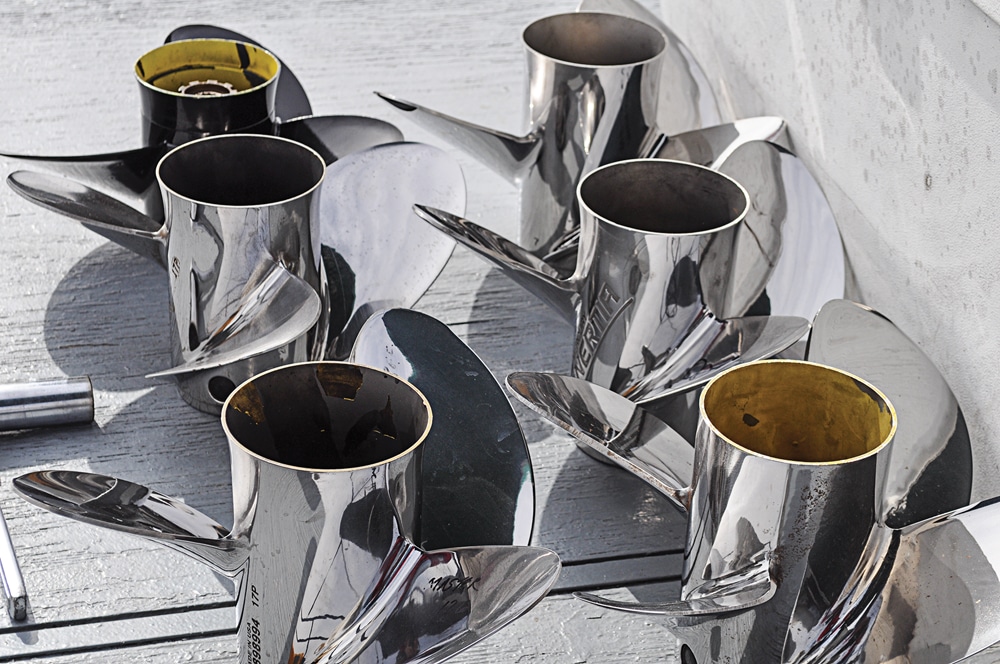
Choosing the Right Prop
So it’s useful to offer another installment of prop basics, an attempt to answer these most elemental and popular propeller head-scratchers, this time using an outboard-powered fishing boat and a selection of props from the vast inventory of Mercury Marine. From its Oshkosh, Wisconsin, testing facility Merc offered us the use of a 1,900-pound Key West 2020 center-console rigged with a Mercury 150 FourStroke outboard, and a full complement of data acquisition gear. From the site’s “wall of props” we chose six Mercury propellers to test, and then bundled up on an October morning and motored out to Lake Butte des Morts. We tested each boat propeller “light” (just the tech on board) and “heavy” (with 350 additional pounds in the boat), always with the 60-gallon fuel tank full.
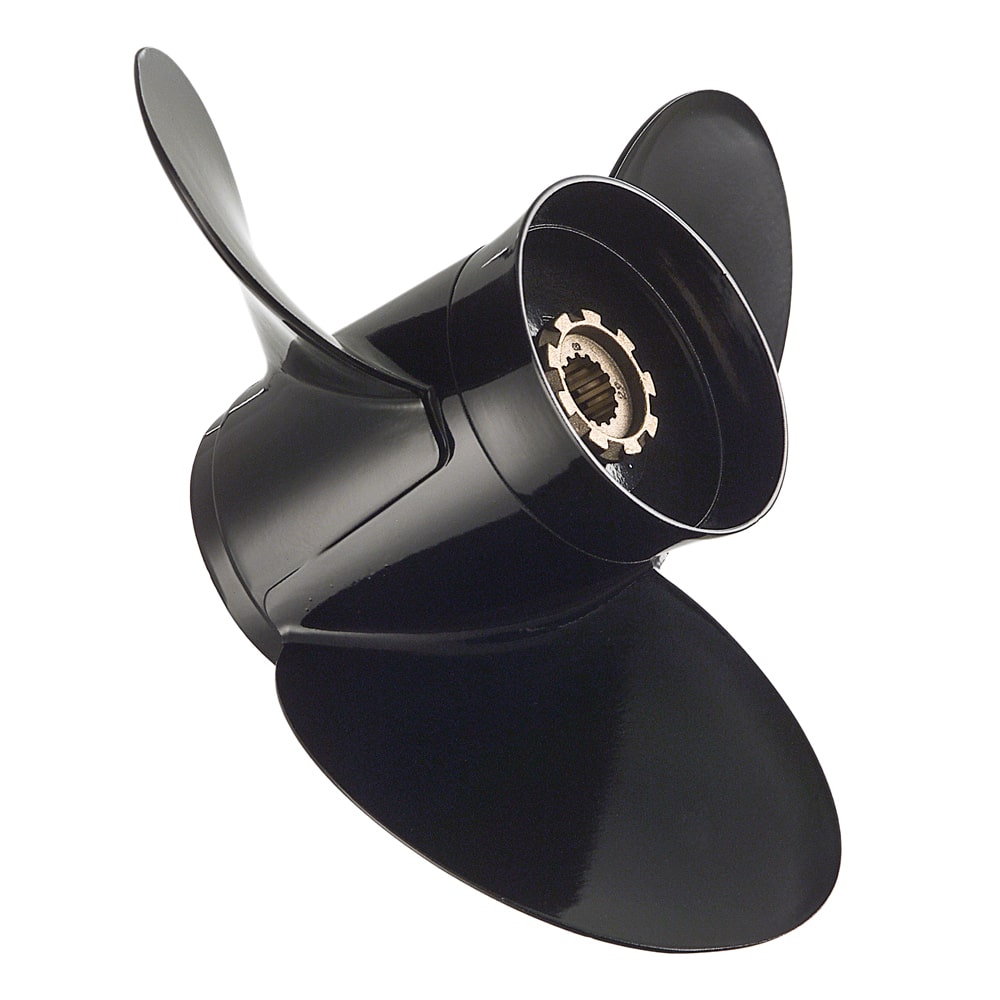
Choosing the Right Prop
$183.13
Aluminum, three-blade, 15″ x 17″ Top Speed/Light: 41.9 mph @ 5,766 rpm
Top Speed/Heavy: 41.8 mph @ 5,820 rpm
0-to-20 mph/Light: 3.4 seconds
0-to-20 mph/Heavy: 4.3 seconds
Max economy: 6.09 mpg @ 3,250 rpm/22.0 mph Boating Magazine
Black Max
The three-blade aluminum Black Max is the best-selling propeller in the world. It’s standard-issue from boatbuilders paired with the MerCruiser Alpha sterndrive and outboards up to about 135 hp. The Black Max is a generalist, with conservative geometry, designed to deliver acceptable performance in almost any situation. Blade flex and modest cupping cause the Black Max to slip more than most stainless-steel props. In our testing, it was significantly slower than the stainless-steel props but matched the acceleration of much more expensive options. The Black Max does not produce the lift of a stainless-steel prop. When running the Black Max, I noted that spray was breaking off the hull forward of a gunwale rod holder, while it broke 18 inches abaft the same rod holder with every stainless prop we tested. I had to trim down to keep the prop from losing bite on the water even when making modest turns — and it blows out immediately when over-trimmed. Made of aluminum, it’s easy to ding up, even beyond repair, with a bottom strike.
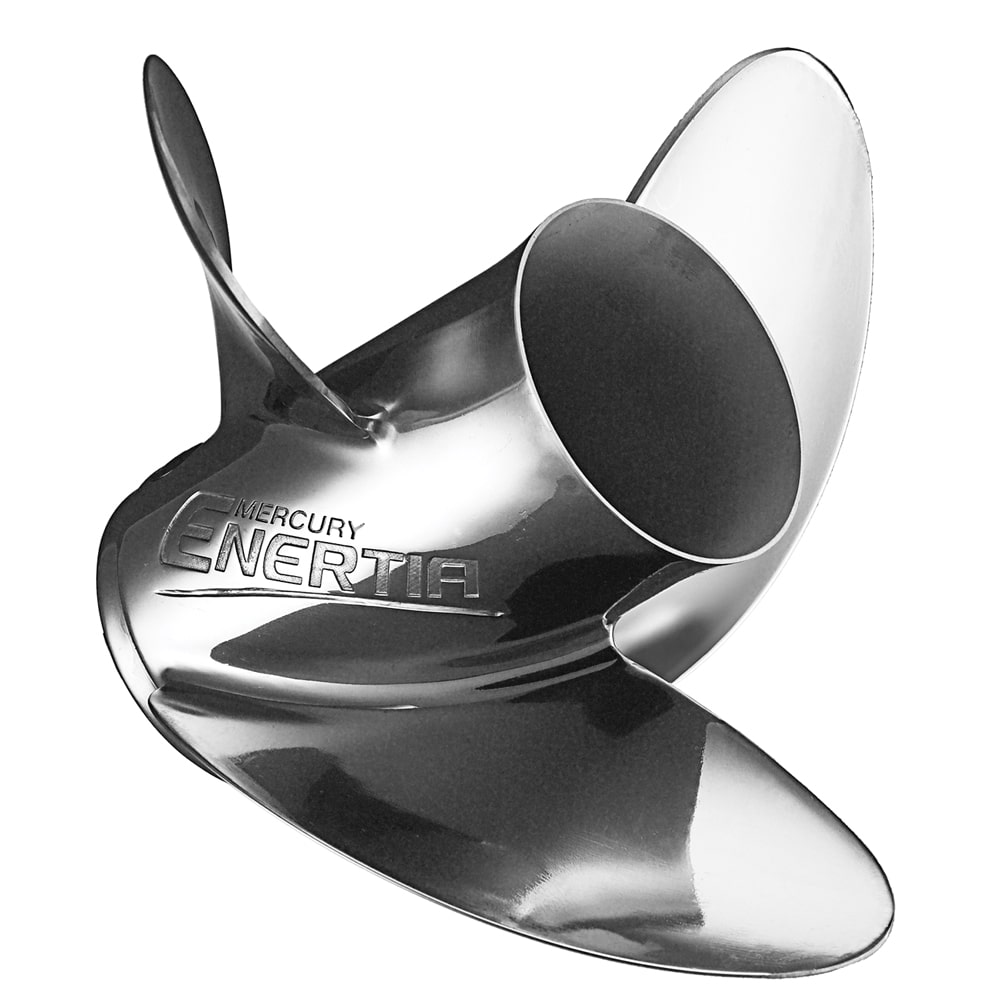
Choosing the Right Prop
$610.30
Stainless steel, three blade, 14 5/8″ x 17″ Top Speed/Light: 45.9 mph @ 5,779 rpm
Top Speed/Heavy: 43.5 mph @ 5,534 rpm
0-to-20 mph/Light: 3.8 seconds
0-to-20 mph/Heavy: 4.6 seconds
Max economy: 5.80 mpg @ 3,253 rpm/23.7 mph Boating Magazine
Tempest Plus
To move up to stainless steel, we chose the Tempest Plus, a performance three-blade boat propeller designed to produce good top speed and a popular choice with tournament bass and walleye anglers. The 17-pitch model we tested is actually the smallest pitch offered — a fast bass boat will run a 25-pitch Tempest Plus. To boost speed, the Tempest Plus has aggressive rake to promote bow lift and less blade area to reduce drag. All of those design elements are critical to maximizing performance on an 80 mph bass rig but become less impactful as boat speed slows down. In our testing, I noted that the Tempest seemed to take less trim than the other stainless props and produced a little less lift. But the boat felt really planted and steady in the water and handled well. The Tempest will also be much more durable than an aluminum prop.
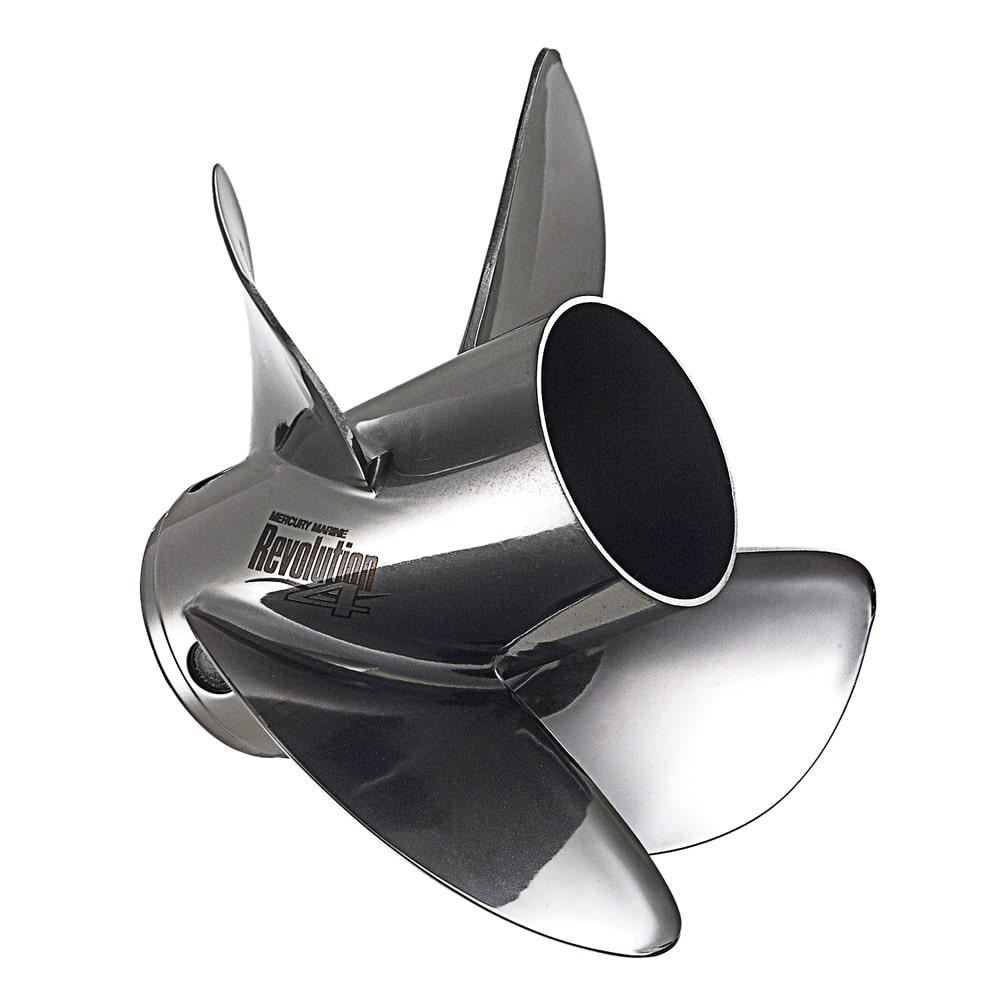
$691.90
Stainless steel, four blade, 14 5/8″ x 17″ Top Speed/Light: 41.9 mph @ 5,766 rpm
Top Speed/Heavy: 41.8 mph @ 5,820 rpm
0-to-20 mph/Light: 3.4 seconds
0-to-20 mph/Heavy: 4.3 seconds
Max economy: 6.09 mpg @ 3,250 rpm/22.0 mph Boating Magazine
Revolution 4
If three blades are good, will four be better? To find out we ran the Revolution 4, sort of a four-blade cousin to the Tempest Plus designed to deliver better hole-shot acceleration than the Tempest simply because it has more blade area. The Rev 4 is very popular on twin-rig outboard offshore boats because it really holds well in rough water, especially in following seas that can lift the transom and ventilate the prop. Merc also recommends the Rev 4 for stepped-hull boats, which send a lot of frothy, aerated water to the props. The extra blade should also produce more drag and thus lower top speed. That might be true on a faster or heavier boat, but in a more modestly powered rig like ours, the difference in performance between these two props is negligible. That said, the Rev 4 feels great from the helm. There’s pronounced bow lift at the last 5 percent of the trim range, it holds well in turns, and it offers better reverse thrust than the Tempest Plus. For general-use boating, overall smoothness is the key advantage of a four-blade prop.
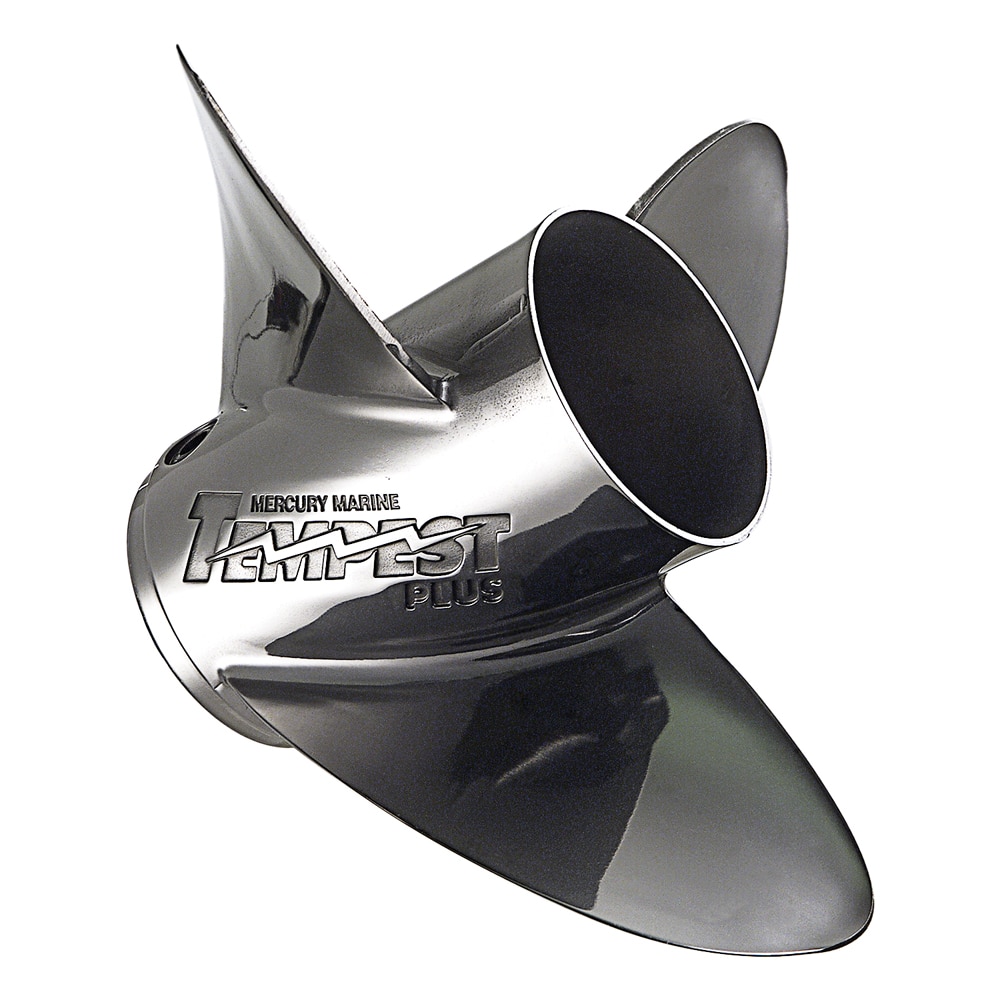
$691.90
Stainless steel, three blade, 14 7/8″ x 16″ Top Speed/Light: 44.9 mph @ 5,812 rpm
Top Speed/Heavy: 43.0 mph @ 5,778 rpm
0-to-20 mph/Light: 3.5 seconds
0-to-20 mph/Heavy: 3.9 seconds
Max economy: 6.07 mpg @ 3,251 rpm/22.4 mph Boating Magazine
Enertia 14 7/8″ x 16″
We ran Enertia to try a different-style prop and also to demonstrate the effect of changing prop pitch. The Enertia is offered in 1-inch pitch increments, rather than the traditional 2-inch increments, to really fine-tune top rpm. It replaced the venerable Mirage Plus as the go-to Verado prop for heavier offshore fishing boats. The smaller diameter helps the motor spin up faster for better acceleration, and the increased blade area works especially well for heavier boats with a single motor. Mercury says the Enertia likes to run deep in the water, and so it’s also a good fit on sterndrive runabouts and big pontoon boats. Comparing the three Enertia pitch sizes we tested, we can generally say the 16-pitch choice produced better acceleration but lower top speed, while the 18 delivered the best top speed and worst hole shot. You’d see similar results comparing props with 2-inch pitch increments, but it would be more pronounced.
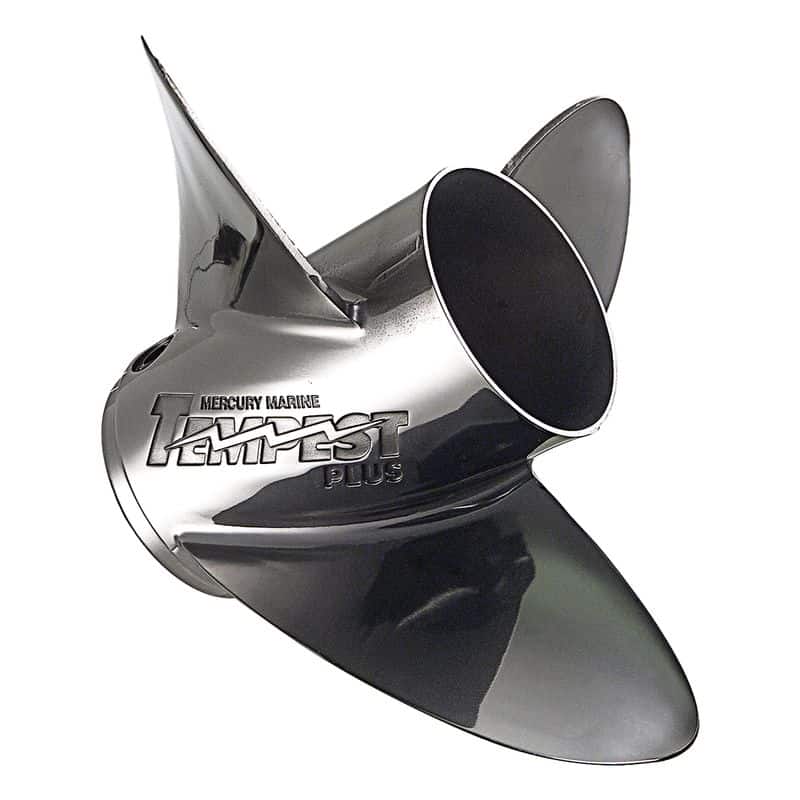
$691.90
Stainless steel, three blade, 14 7/8″ x 17″ Top Speed/Light: 46.4 mph @ 5,791 rpm
Top Speed/Heavy: 43.9 mph @ 5,656 rpm
0-to-20 mph/Light: 3.6 seconds
0-to-20 mph/Heavy: 4.5 seconds
Max economy: 6.12 mpg @ 3,248 rpm/23.4 mph Boating Magazine
Enertia 14 5/8″ x 17
The reason the Enertia propeller is offered in 1-inch pitch increments is because it was designed specifically for Mercury Verado outboards. The 5,800 to 6,200 peak rpm range of Verado outboards both is higher and occurs in a narrower band than two-stroke outboards, such as the Mercury Optimax, which has a peak operating range of between 5,000 and 5,750 rpm. Since prop pitch is essentially the final drive gear ratio for an outboard, smaller pitch increments allow adjusting top rpm to suit load conditions for engines with narrower top rpm bands.
The 17-inch-pitch Enertia propeller proved just right for our test boat. First, it allowed the engine to “turn up” to its maximum rated rpm. (That the engine slightly exceeded the recommended rpm range while lightly loaded with this prop is acceptable and, in fact, what we look for when testing boats. In “normal” use, most boats are loaded heavier, have the bottom painted, carry more crew, etc., all of which brings rpm down.) It also matched the top speed of the 18-pitch prop and the hole-shot acceleration of the 16-inch prop.
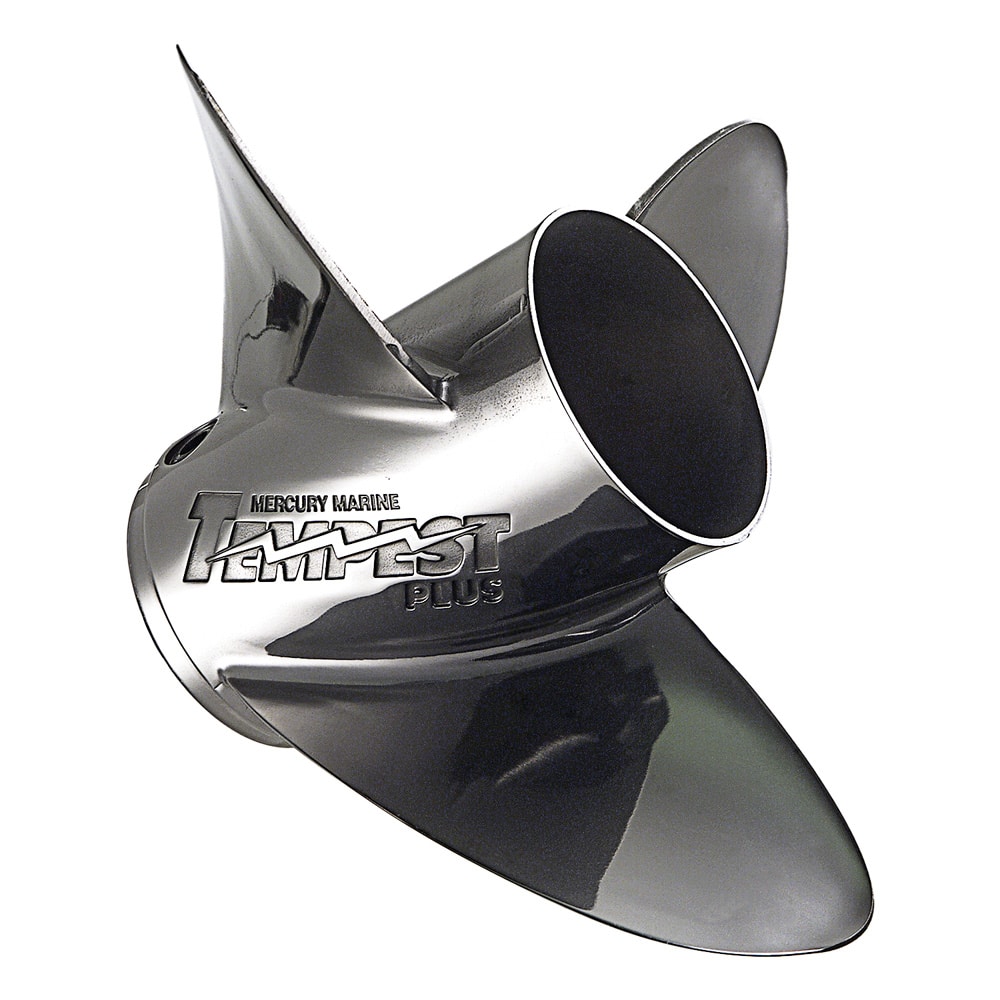
Choosing the Right Prop
$691.90
Stainless steel, three blade, 14 1/2″ x 18″ Top Speed/Light: 46.5 mph @ 5,532 rpm
Top Speed/Heavy: 44.2 mph @ 5,446 rpm
0-to-20 mph/Light: 4.1 seconds
0-to-20 mph/Heavy: 4.8 seconds
Max economy: 5.72 mpg @ 3,258 rpm/23.7 mph Boating Magazine
Enertia 14 1/2″ x 18
The 18-inch-pitch Enertia propeller delivered the best top speed and the worst hole shot. It’s expected that more pitch will equate to higher speed, since pitch is the nominal distance the propeller moves through the water for each revolution. Ergo, for the same amount of rpm, more pitch equals more speed, which our testing confirmed.
But there’s a rub: More pitch doesn’t allow the engine to rev up as high, so the top speed potential of adding pitch may be greater than the reality. Moreover, acceleration, and the ability to hold the boat up and at a steady speed at lower rpm (handy in many situations), is reduced. Think of more pitch as a higher gear: You can use it to start a vehicle moving or while climbing a hill, but it’s less than optimal. Compare the acceleration numbers of this “faster” prop with the other two Enertias and you can see the effect yourself.
Enertia props are smaller in diameter and have more moderate rake, and less aggressive cup, than the Mirage Plus props they superseded. But they have more blade area than fast bass-boat props.
Conclusions
1. A modern aluminum prop works fine, but a stainless-steel prop will outperform aluminum in every way. Only you can decide if that overall performance is worth $600.
2. In our test situation, the four-blade prop matched the performance of the three-blade stainless-steel prop, and it felt better from the helm. I’d spend the extra $80 for the Revolution 4.
3. It’s better to be underpropped than overpropped. A boat running too much prop pitch will feel doggy all over the operating range because the motor is always working a little harder. On the day you have a full load of passengers it will feel like a real slug. If you never run your boat near full throttle, there’s nothing wrong with running one size underpropped and enjoying better acceleration, not just on hole shot but also in the midrange, which is where you really run the boat.
4. If your boat already planes in four seconds, there’s not much room for improvement. If your boat planes in six to eight seconds, a better prop might make a difference you can really feel.
Our testing for this story only serves as an example. The tricky element of propping is that there are many variables that can affect how a particular prop works on a particular boat, including boat weight, weight distribution, engine/drive height, the hull form, the way water flows to the prop, the power curve of the engine, and on and on. The Mercury website, for example, has a prop-selector tool (mercurymarine.com/propellers/prop-selector/#) that will get you in the ballpark, but from there you’ve really got to demo each prop to see how it feels on your boat. Find a dealer that will let you test-drive a number of props before you buy. You can do your own testing with a GPS and a stopwatch, but also pay attention to how the boat feels with each prop. That’s an element of performance you’ll appreciate every time you run your boat.
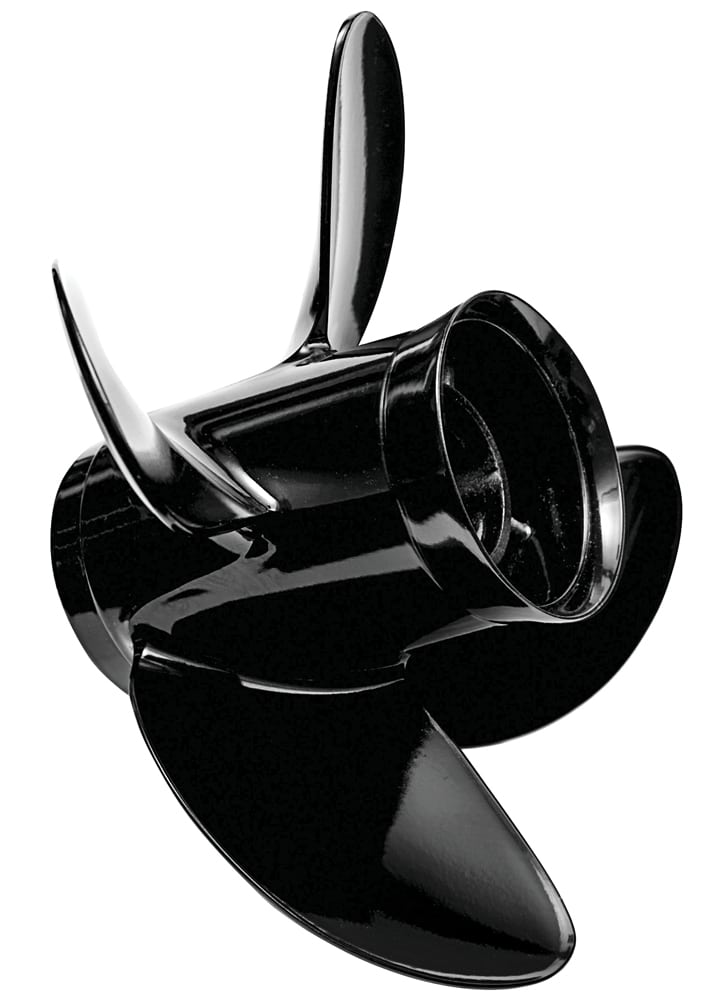
Choosing the Right Prop
